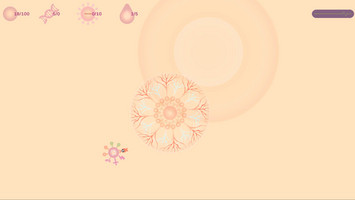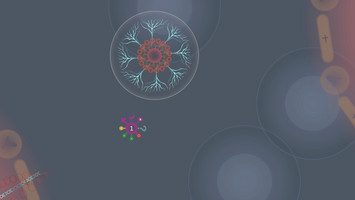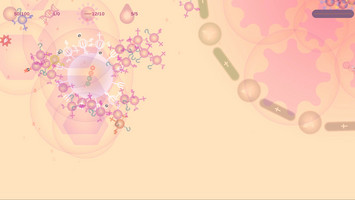Dev Log #1: Crafting the Art of Viral Mutation




To learn more about "Propa." and experience its innovative gameplay, visit our game store page here!
When we first embarked on the journey to create "Propa.," we knew we wanted to deliver a unique experience that combined science, strategy, and creativity. But one particular feature stood out as both a challenge and a triumph in the game's development: viral mutation. Today, I want to share the story of how we designed this dynamic mechanic and why it became one of the most exciting elements of the game.
### Why Mutation Matters
In the real world, viruses are notorious for their ability to adapt. This adaptability is what makes them so formidable against immune systems, treatments, and vaccines. We wanted to capture this essence in "Propa.," but we also wanted to give players control over it. Mutation had to feel like a tool—a strategic choice rather than a random roll of the dice.
So, instead of making mutations purely luck-based, we designed them as a mechanism that players could influence through careful planning. By equipping their viral units with Mutation Fragments, players could trigger transformations during replication. These transformations could lead to new genetic fragments with special abilities, opening up new possibilities for gameplay. This added layer of control ensured that mutation felt like an empowering feature rather than a chaotic gamble.
### Balancing Chaos and Strategy
One of the toughest parts of designing the mutation system was striking the right balance between unpredictability and player agency. We wanted mutations to feel dynamic and surprising—after all, that's part of the thrill—but we also knew that too much randomness could frustrate players who prefer calculated strategies.
To address this, we implemented a mutation preview system. When players deploy Mutation Fragments, they get hints about which genetic fragments might emerge. This preview isn't absolute; it's a probability-based forecast that keeps players guessing while still allowing them to make informed decisions. For instance, if you're aiming for a Hemorrhagic Fever Fragment to wreak havoc on endothelial cells, you might see a 60% chance for it to appear after replication. That 40% uncertainty adds tension but doesn’t leave you entirely at the mercy of chance.
### Creating Diversity in Gameplay
Another exciting aspect of mutation is how it adds diversity to every playthrough. No two games of "Propa." are ever the same because mutations constantly reshape the battlefield. You might start with a virus optimized for rapid replication using Acceleration Fragments but later decide to pivot toward immune suppression by mutating into Signal Suppression Fragments. Or perhaps you'll stumble upon an Antigen Conversion Fragment and suddenly have the upper hand against white blood cells.
This variability ensures that players are always adapting their strategies to new circumstances.
### The Visual Design of Mutation
Of course, mutation isn’t just about mechanics—it’s also about presentation. We wanted players to feel the excitement of transformation visually as well as strategically. Each time a mutation occurs, the virus’s appearance changes slightly, reflecting its new genetic makeup. For example, a virus with Spike Protein Fragments might have sharp protrusions on its surface, while one with Hemorrhagic Fever Fragments might look jagged and unstable.
These visual cues aren’t just aesthetic; they’re functional too. Players can quickly identify which genetic fragments their viral units carry by observing their appearance. This makes it easier to coordinate attacks and defenses without constantly checking menus.
### Lessons Learned
Developing the mutation system taught us a lot about balancing complexity with accessibility. Early in development, we had a version of mutations that was overly convoluted—it required players to memorize intricate interactions between genetic fragments, surface antigens, and immune responses. While this was scientifically accurate, it wasn’t fun. We realized that gameplay needed to take precedence over realism, so we simplified the system while retaining its depth.
Another lesson was the importance of feedback loops. Players needed clear signals about how their choices were impacting the game world. That’s why we added visual effects, audio cues, and in-game notifications whenever mutations occurred or immune responses were triggered. These feedback mechanisms make the game feel alive and responsive, heightening player engagement.
### What’s Next?
As we continue refining "Propa.," we’re exploring ways to expand the mutation system even further. One idea we’re experimenting with is environmental influence—allowing external factors like temperature or pH levels in the host body to affect mutation outcomes. This would add another layer of strategy, as players would need to adapt their tactics based on changing conditions.
We’re also considering introducing rare "super mutations" that unlock entirely new gameplay mechanics. These would be difficult to achieve but incredibly rewarding, giving players something exciting to strive for during long campaigns.
### Closing Thoughts
Mutation is more than just a gameplay feature in "Propa." It’s a representation of adaptability, creativity, and evolution—themes that resonate deeply with both science and strategy enthusiasts. Whether you’re carefully planning your next move or embracing the chaos of unexpected transformations, mutation ensures that no battle ever feels stale.
We’re thrilled with how this mechanic has shaped the game’s identity, and we can’t wait for players to experience it firsthand. As always, your feedback will be invaluable as we continue improving and expanding "Propa." So dive in, experiment with mutations, and let us know what surprises you uncover!
Until next time—keep evolving!
To learn more about "Propa." and experience its innovative gameplay, visit our game store page here!
Get Propa.
Propa.
Control your virus, evolve, and fight the immune system. Equip genes, build armies, and strategize to win or escape.
Leave a comment
Log in with itch.io to leave a comment.